If you’ve ever dreamed of growing fresh vegetables, herbs, or leafy greens at home—but don’t have the space or time for traditional gardening—vertical hydroponics might be the perfect solution for you. This innovative gardening method allows you to grow more plants in less space, using water and nutrients instead of soil.
And the best part? You can easily build your own vertical hydroponics system without using pots, right at home, with inexpensive materials.
In this guide, we’ll break down exactly how to set up your own vertical hydroponic tower system, the materials you’ll need, how to keep it running efficiently, and tips to ensure a healthy, thriving harvest year-round.
What Is a Vertical Hydroponics System?
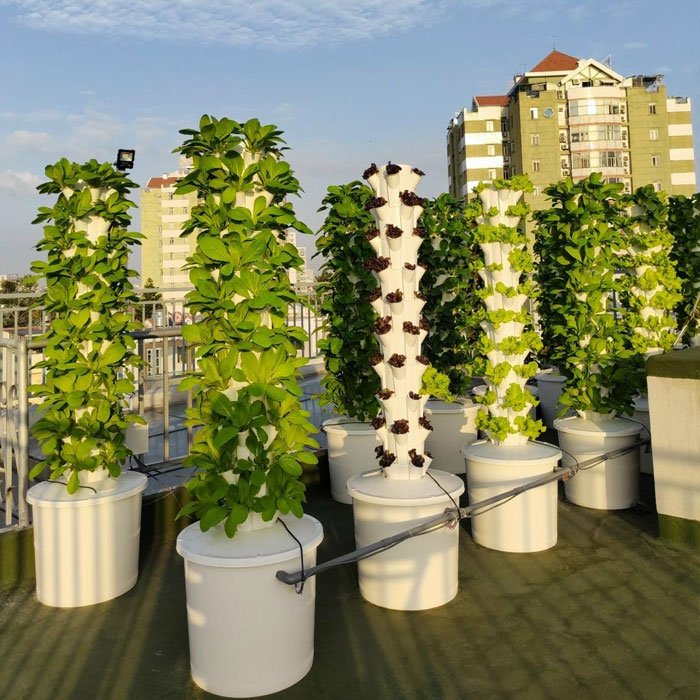
Hydroponics is a soil-free growing method where plants receive nutrients directly from a water-based solution. A vertical hydroponics system takes this a step further by stacking plants vertically, saving enormous amounts of space while maximizing yield.
Instead of planting in pots or garden beds, you grow plants in holes or net cups placed along a vertical pipe or frame. The nutrient-rich water circulates through the system, feeding the roots directly.
This setup is ideal for urban gardeners, apartment dwellers, or anyone looking to grow more in limited space.
Why Build a Hydroponic System Without Pots?
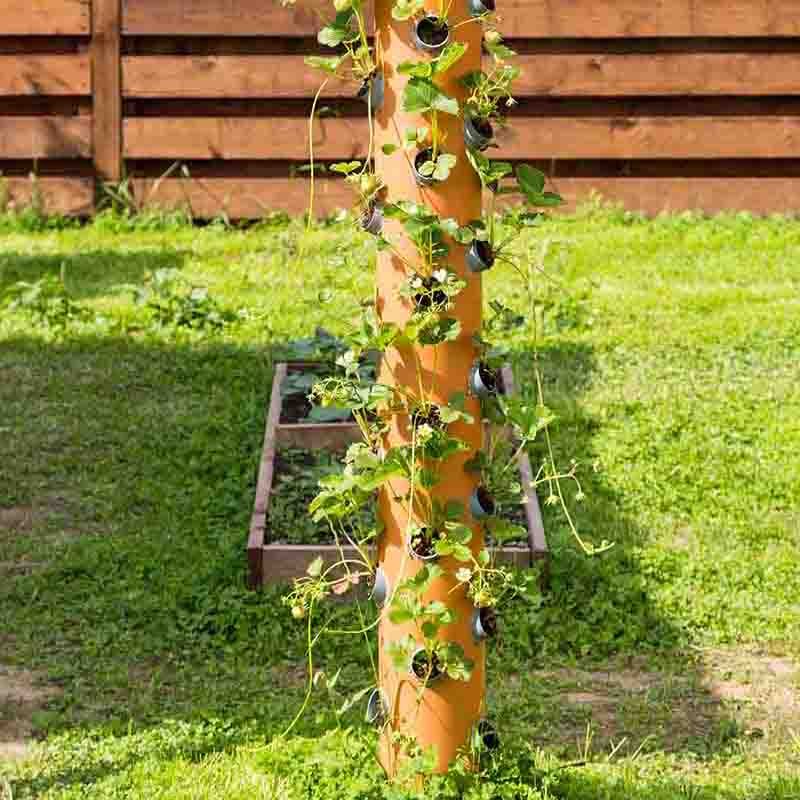
Traditional hydroponic systems often rely on small net pots to hold the plants. However, this DIY version skips the pots entirely—making it simpler, cheaper, and easier to maintain.
Here’s why building a hydroponics system without pots can be a smart choice:
- Lower Cost: You eliminate the need for net pots or containers, reducing startup expenses.
- Less Plastic Waste: Eco-friendly and sustainable, since you’re reusing materials like PVC pipes or recycled bottles.
- Simplified Setup: Fewer parts mean easier cleaning and faster assembly.
- Better Root Growth: Without the restriction of pots, roots have more space to spread and absorb nutrients.
- Space Efficiency: Perfect for vertical gardening in small areas like balconies, patios, or rooftops.
Materials You’ll Need
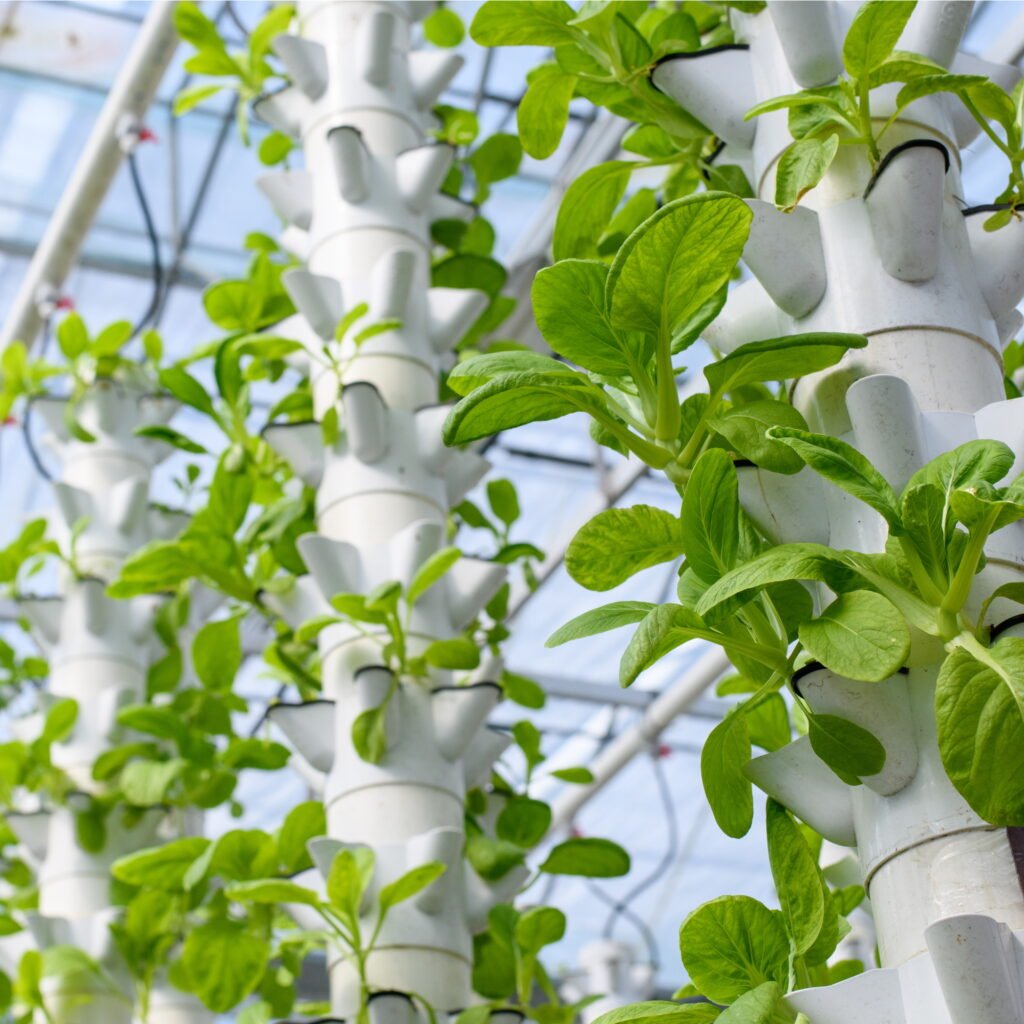
Before you begin, gather the following supplies (most are affordable and easily available at hardware or garden stores):
- PVC Pipe (4–6 inches in diameter): Acts as the main tower for your vertical hydroponic system.
- PVC Elbows or Connectors: To help shape and support the structure.
- Drill and Hole Saw: For cutting planting holes into the pipe.
- Water Pump: To circulate the nutrient solution through the system.
- Reservoir Tank: A large plastic container or bucket to hold the water and nutrients.
- Tubing: Connects the pump to the top of the tower for water circulation.
- Hydroponic Nutrients: Balanced fertilizer specifically formulated for hydroponic growing.
- Growing Medium: Such as coco coir, rockwool, or perlite (to support seedlings).
- Seedlings or Seeds: Choose fast-growing plants like lettuce, spinach, basil, or kale.
Optional additions:
- A timer for automated watering cycles.
- A LED grow light if you’re setting up indoors.
Step-by-Step Guide to Building the System
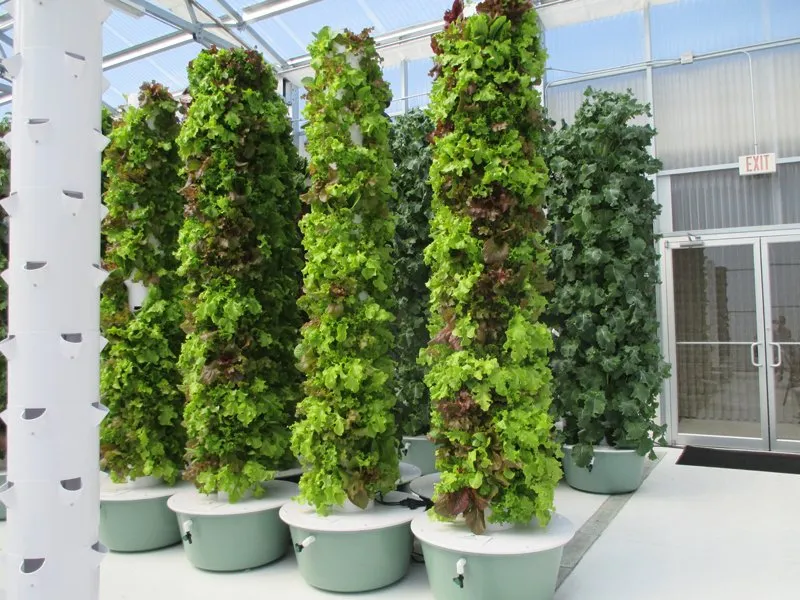
1. Prepare the PVC Tower
Start with a large PVC pipe (around 4–6 inches in diameter). This will serve as the main column where your plants will grow.
- Mark evenly spaced holes along the pipe using a marker.
- Use a hole saw drill bit (2–3 inches wide) to create openings.
- Space each hole about 6–8 inches apart, ensuring enough room for plant growth.
These holes are where your seedlings will be placed—no need for pots!
2. Create the Base and Support
- Attach a PVC cap to the bottom of your pipe to prevent leaks.
- Mount the pipe vertically onto a support base—you can use wood, metal stands, or another sturdy PVC frame.
- Position the tower over your reservoir tank, where the nutrient solution will be stored.
This setup allows the nutrient water to drain back into the tank, creating a closed-loop system.
3. Set Up the Water Circulation
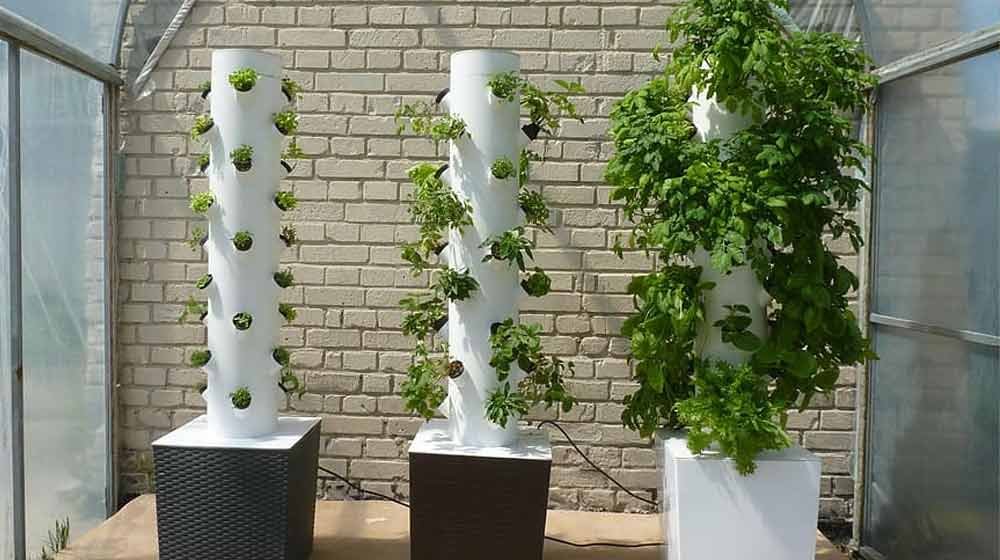
- Place the water pump inside your reservoir tank.
- Attach a length of tubing from the pump to the top of your PVC tower.
- Drill a small hole at the top of the pipe and insert the tubing, allowing water to flow down through the tower.
As the pump pushes the nutrient solution upward, it trickles down through the tower—feeding all the plants along the way before returning to the reservoir.
4. Mix the Nutrient Solution
In hydroponics, the nutrient solution is the lifeline of your plants.
- Fill your reservoir with clean water.
- Add the recommended amount of hydroponic fertilizer according to the instructions on the package.
- Stir well and check the pH level, aiming for a range between 5.5 and 6.5.
You can test this with an inexpensive pH meter or strips from a garden store.
5. Insert the Plants
Now comes the fun part—planting!
- Place your seedlings into the holes of the PVC pipe.
- Use a small piece of coco coir or rockwool to support the roots and keep them moist.
- Ensure the roots have contact with the nutrient solution as it flows through the system.
Because this setup doesn’t use pots, roots will grow directly inside the tower, accessing all the nutrients they need.
6. Power On and Monitor
- Plug in your water pump and check for even water flow through the system.
- Make sure every planting hole receives a gentle trickle of nutrient solution.
- Adjust the flow rate if necessary—too much can drown the roots, while too little can dry them out.
For best results, run the pump for 15–30 minutes every 2–3 hours, or use a timer for automatic control.
Plants That Grow Best in Vertical Hydroponics
While almost any small plant can be grown hydroponically, some species thrive especially well in vertical setups. Try starting with:
- Lettuce and leafy greens (romaine, butterhead, spinach, kale)
- Herbs (basil, parsley, cilantro, mint)
- Strawberries
- Small peppers or cherry tomatoes (with proper support)
Avoid root-heavy or tall plants like carrots or corn, which need deeper soil and stability.
Maintenance and Care Tips
Keeping your hydroponic tower system healthy doesn’t require much effort, but consistency is key.
- Monitor Nutrient Levels: Refill your reservoir as water evaporates, and top up with nutrients weekly.
- Check pH Regularly: Incorrect pH levels can block nutrient absorption.
- Clean the System Monthly: Flush with clean water to prevent algae or mineral buildup.
- Provide Light: If indoors, use LED grow lights for 12–16 hours daily.
- Inspect Roots: Healthy roots should look white and firm; brown roots indicate overwatering or poor oxygen flow.
Benefits of Building a Vertical Hydroponics System Without Pots
This DIY project offers several long-term benefits that make it ideal for modern gardeners:
- Space Efficiency: Perfect for apartments or small patios—grow up instead of out!
- Water Conservation: Uses up to 90% less water than soil gardening.
- No Weeding or Soil Pests: Cleaner, faster, and low-maintenance growing.
- Year-Round Production: With a simple indoor setup, you can grow fresh produce all year long.
- Faster Growth: Plants receive direct nutrients, promoting quicker and healthier development.
It’s an eco-friendly, sustainable way to grow food right where you live.
Common Mistakes to Avoid
Even with an easy design, beginners often face a few challenges. Watch out for these common mistakes:
- Clogged Tubes or Pumps: Regularly check for algae buildup or debris.
- Inconsistent Water Flow: Uneven water distribution can starve some plants.
- Ignoring pH Levels: Too acidic or alkaline water can harm roots.
- Overcrowding Plants: Leave enough space for air circulation and light.
- Insufficient Light: Indoor plants need strong LED lights to grow properly.
A little attention goes a long way in keeping your hydroponic system thriving.
Final Thoughts: Grow Smart, Grow Vertical
Building your own vertical hydroponics system without pots is not just a fun DIY project—it’s a step toward sustainable living. With a few affordable materials, you can grow your own fresh herbs, greens, and veggies in a compact, mess-free setup that works indoors or outdoors.
You’ll save money, enjoy fresher produce, and reduce your environmental footprint—all while watching your plants thrive in a futuristic, soil-free garden.
Whether you’re a beginner gardener or a seasoned grower looking to experiment, this simple hydroponic tower system is your gateway to efficient, high-yield, and eco-friendly gardening.
So, roll up your sleeves, grab a PVC pipe, and start building your own vertical oasis today—you’ll never look at grocery store greens the same way again.
Keywords for SEO Optimization:
vertical hydroponics system, hydroponics without pots, DIY hydroponics setup, how to build a hydroponic tower, soil-free gardening, indoor gardening, hydroponic growing guide, sustainable food system, grow vegetables indoors, urban hydroponics.
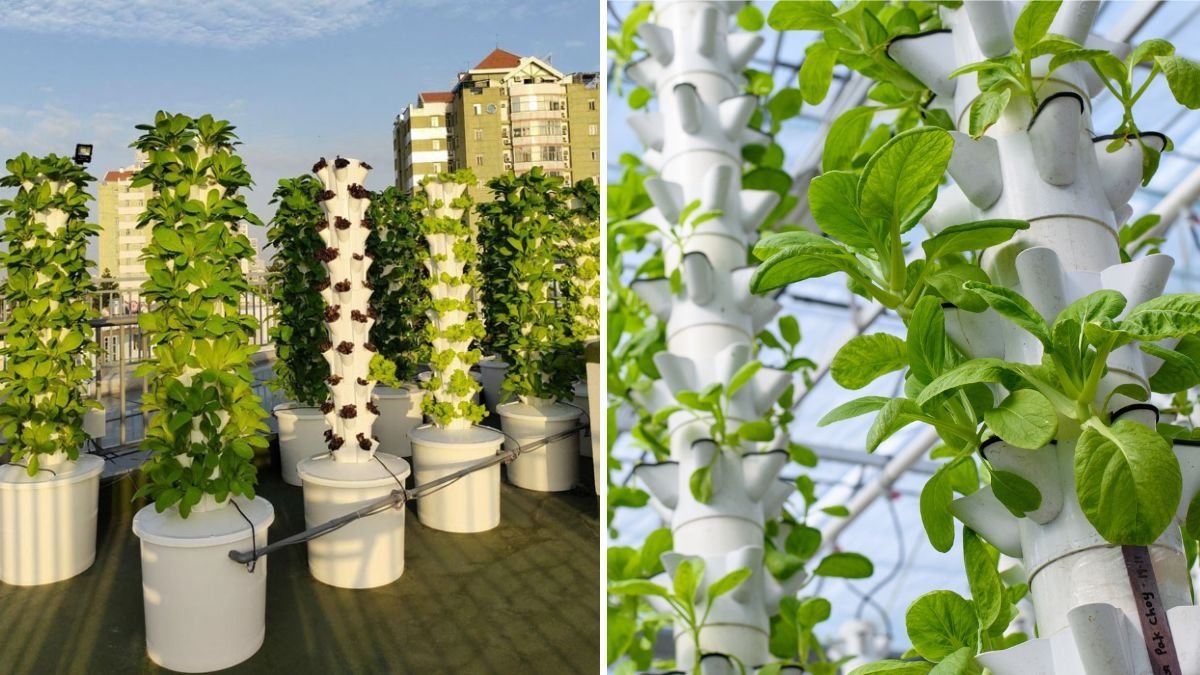




Leave A Comment